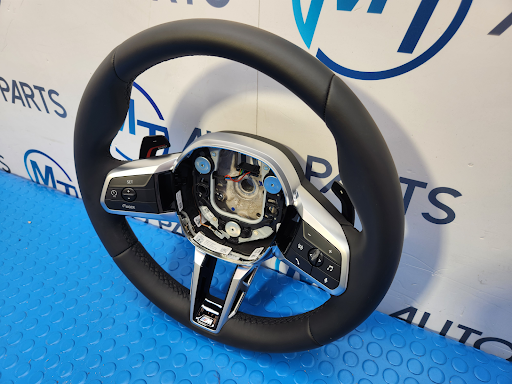
Photo by Chinmay Jade on Unsplash
Aside from the engine, the wheels of your vehicle undergo the most wear and tear of any component, necessitating regular maintenance. Proper attention to your car’s wheels results in a smooth and safe driving experience, and much of it can be done without scheduling a mechanic. This efficient and quick guide will review general wheel maintenance, including the brake systems, ensuring proper upkeep going forward.
Tires
Tires are the foundation of your vehicle’s mobility and safety, making their maintenance paramount. They constantly endure stress and daily erosion from general driving. Here is a concise list of what you should review when it comes to your car’s tires:
Tread Depth
Use a measuring device to check the tread depth of your tires. You can consult your car’s manual or search online to find the safe depth levels. If your tread depth is below safe levels, replace the tire immediately, as it can cause a total loss of control in situations such as rain.
Pressure
Regularly check your tire pressure using a reliable pressure gauge. Some gas stations offer inexpensive gauges for testing, while affordable gauges are available for home use. Underinflated tires can lead to decreased fuel efficiency and uneven wear, while overinflated tires can affect traction and reduce handling.
Tire Rotation
Rotate your tires regularly to promote even wear and extend their lifespan. Tire rotation simply involves moving your existing tires to different positions on the car. Consult your car’s manual to determine where to move each wheel for optimal results.
Brake System
Coinciding with your tires, the brake system plays a crucial role in your vehicle’s wheel handling. While brake system maintenance often requires a mechanic, you can still review and perform some tasks at home. Here’s how to review and maintain your brake system:
Brake Rotors
Brake rotors are vital components of the braking system, requiring periodic inspection for signs of damage or wear. Look for grooves, cracks, or warping on the rotor surface, and promptly replace worn or damaged rotors. If you need to reorder new brake rotors, do so yourself to avoid being overcharged at a mechanic. You can utilize online search engines as a brake rotor finder.
Brake Pads
Regularly check your brake pads for signs of wear and tear. Worn-out brake pads can damage the brake rotors and compromise braking performance, potentially leading to accidents. Replace brake pads as needed, and it’s best to look up photos online of worn-out examples for reference.
Brake Calipers
Inspect the brake calipers for any signs of sticking or malfunction. Stuck calipers can cause uneven brake pad wear and overheating of the brake rotor. Clean or replace calipers as necessary to maintain proper brake operation.
Wheels
Keeping your wheels clean improves your car’s appearance and protects them from corrosion. This last section will cover the wheels themselves, which typically don’t require significant maintenance. Follow these tips for effective wheel cleaning:
Gentle Cleaners
Use a mild wheel cleaner specifically formulated for your wheel type to avoid damaging the finish. Avoid harsh chemicals or abrasive cleaners that can strip away protective coatings, leading to rust and corrosion.
Wheel Sealant
After cleaning, apply a layer of wheel sealant to protect the wheels from corrosion and make future cleaning easier. This often results in a beautiful shine on your tires and wheels, improving aesthetics and protecting the wheels.
Conclusion
Maintaining your car’s wheels is paramount to ensuring optimal performance, safety, and longevity. By following the tips outlined in this guide, you can keep your tires, brake system, and wheels in top condition, reducing maintenance costs. Learning home car maintenance is well worth it, as you will be using cars throughout your entire life.






